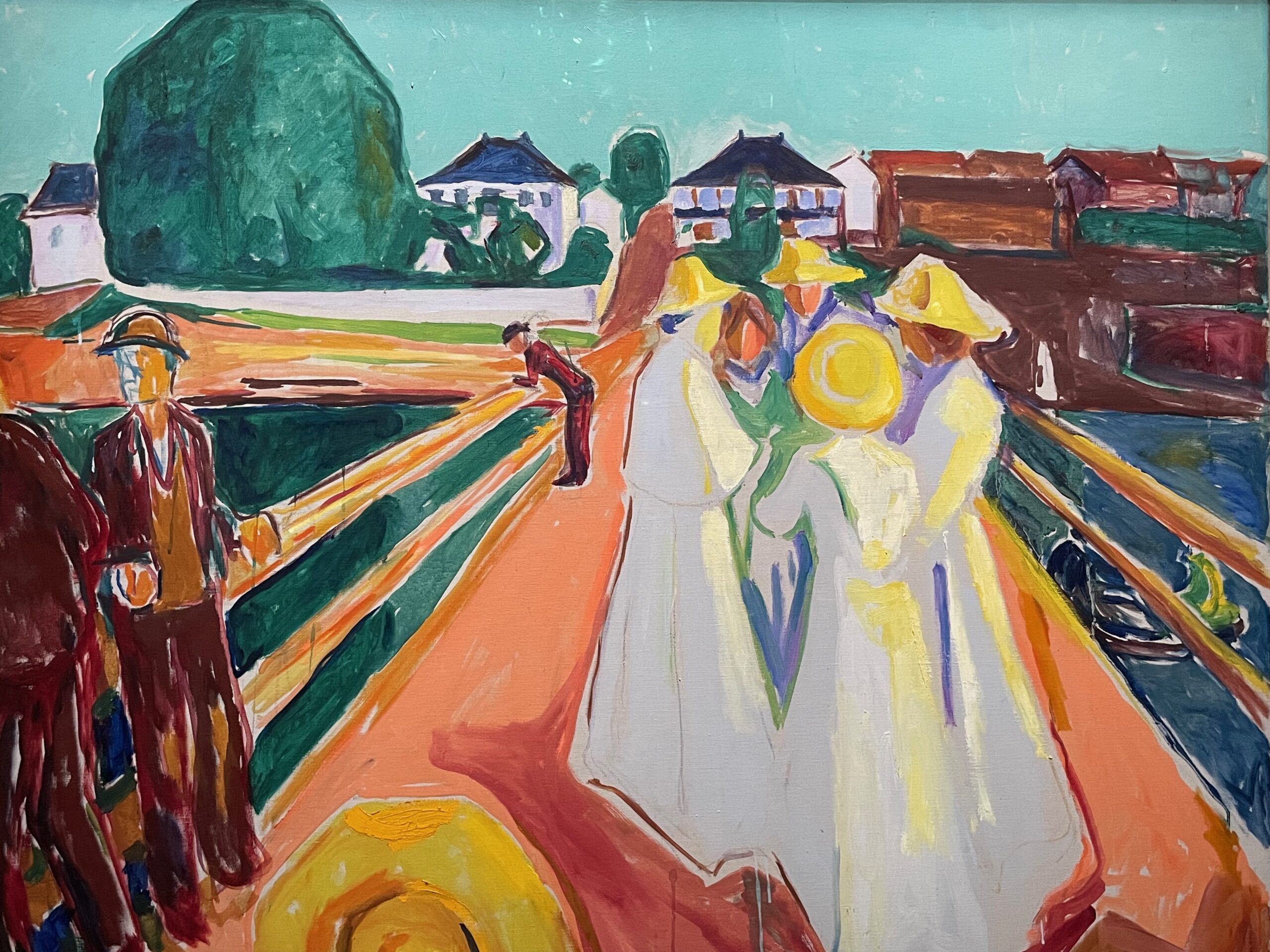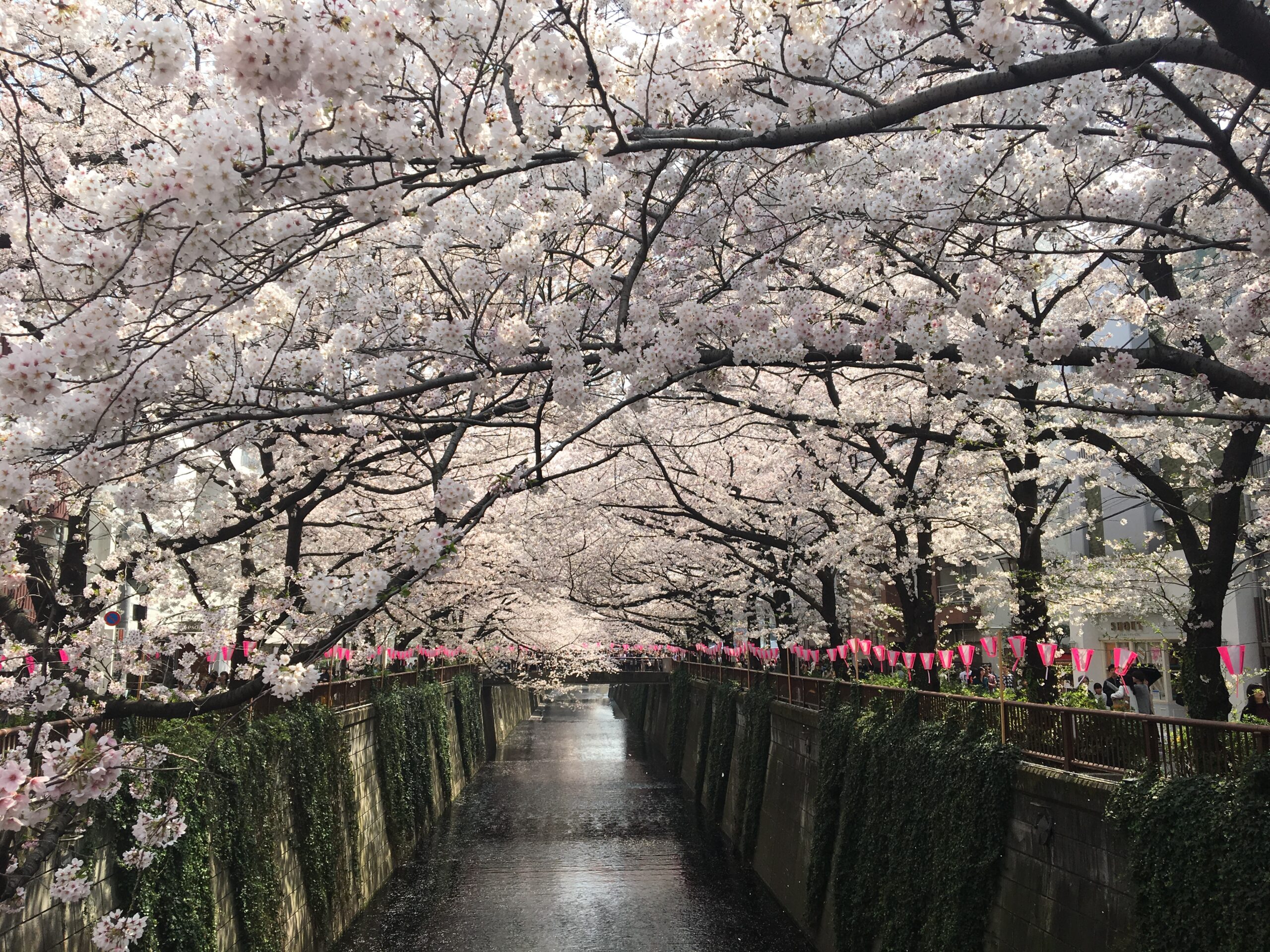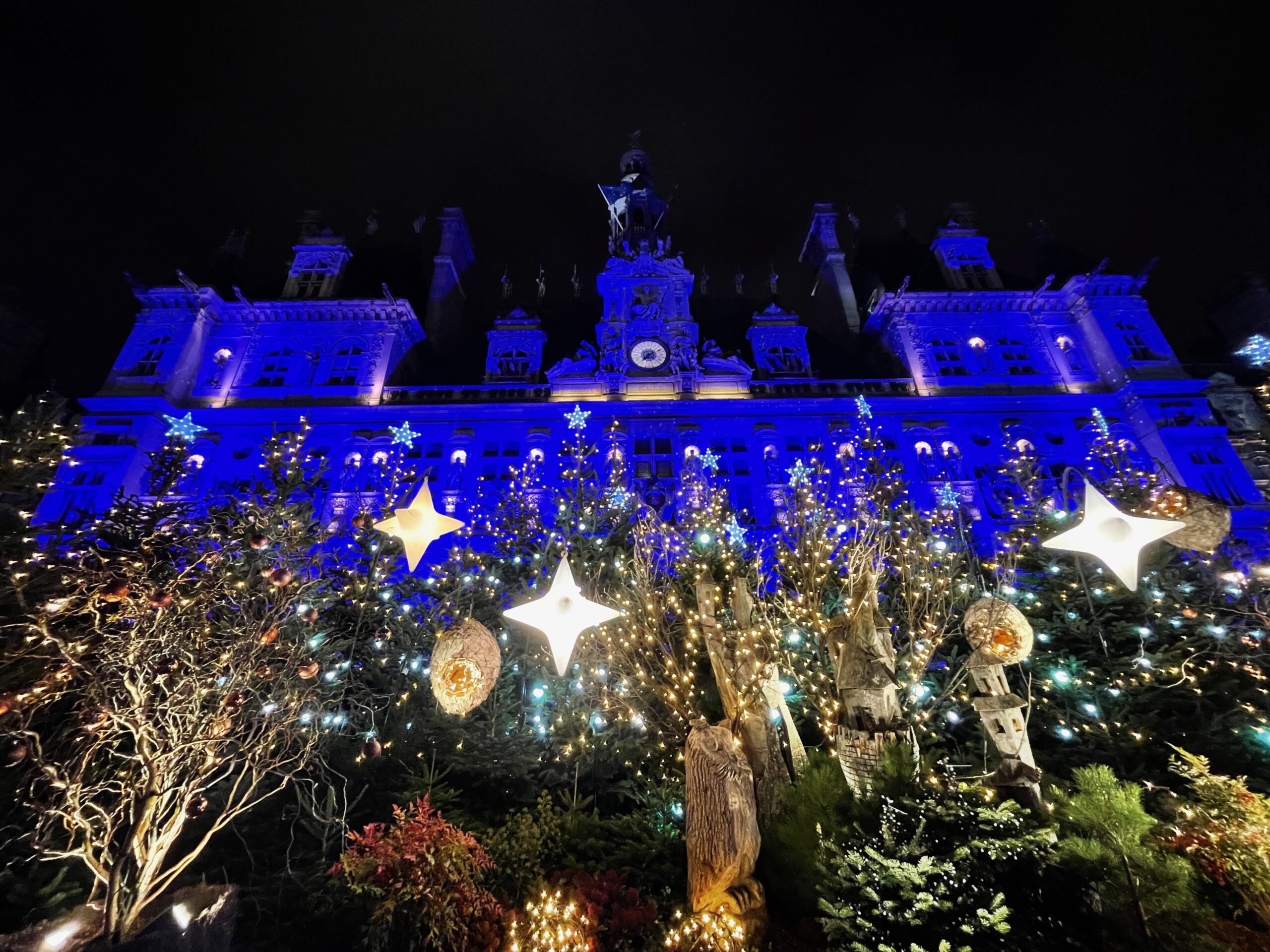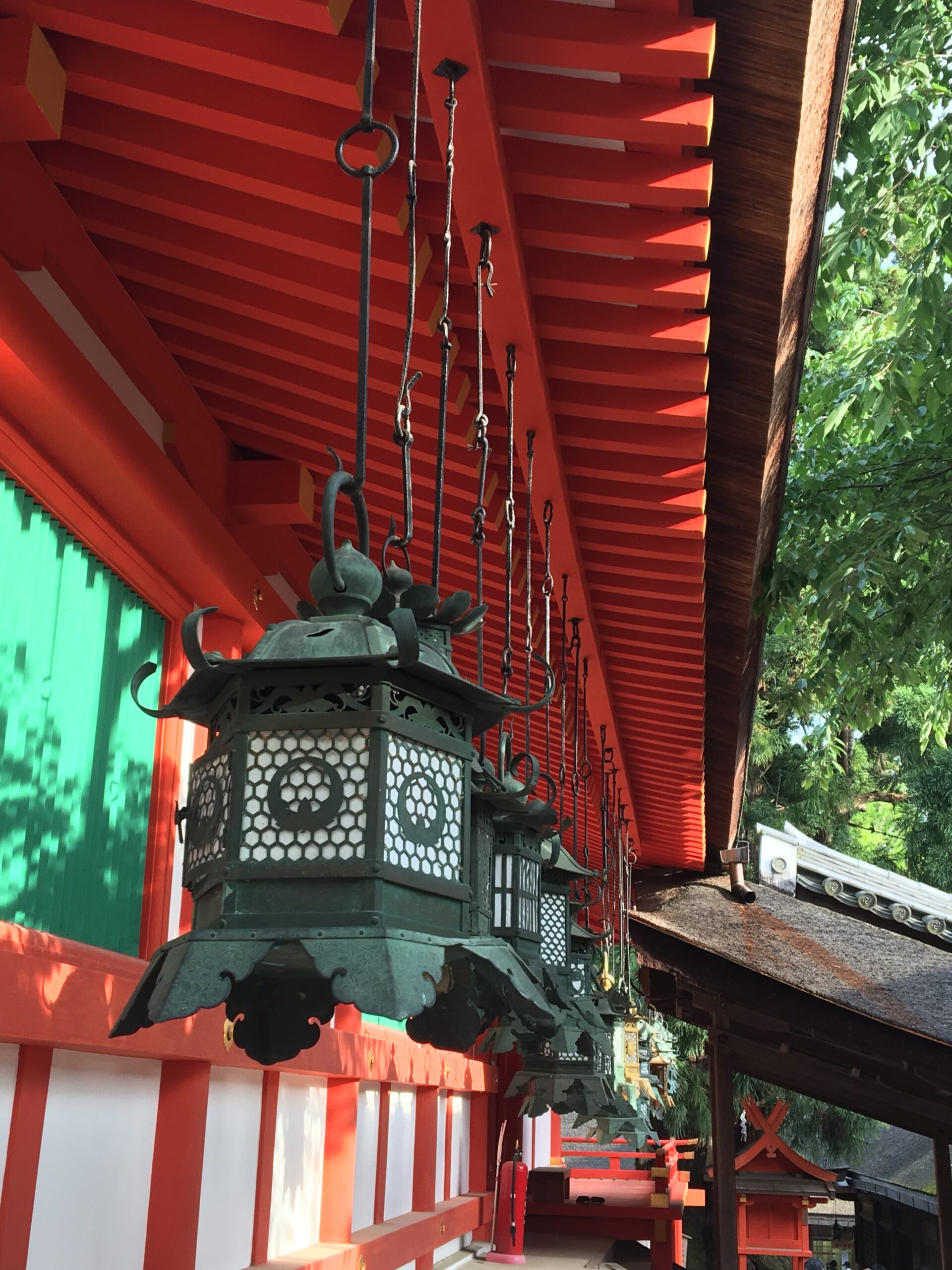Parisian Musée d’Orsay exhibited in collaboration with Munch Museum in Oslo selected masterpieces of Edvard Munch illustrating 60 years of his creative work. You could see the artworks between September 20, 2022 to January 22, 2023. Munch (1863-1944) is considered as one of the most significant artists of Modernism. The exhibition shows how different events in life of this famous Norwegian, influenced and shaped his style and determined the choice of themes of his works.
Although the key (and often dramatic) events in his life, determined the choice of the themes and influenced his creative process, the paintings at the exhibition were not displayed chronologically. The aim was rather to focus on global view of Munch’s work which often expressed the idea that humanity and nature are united in the cycle of life, death and rebirth. The exhibition shows how certain motifs recur on a regular basis and enables visitors to discover the artist’s world, which is cohesive and even obsessive, yet constantly renewed.
In his childhood, Munch drew and painted with his aunt, Karen Bjelstad, who was taking care of him after the premature death of his mother. At the age of seventeen, Munch started his studies at the Royal School of Art and Design in Oslo (called Kristiania at the time). He spent there several months and exhibited for the first time two years later. In 1885, he obtained a scholarship which enabled him to visit Paris where he could study naturalistic art which was very popular among Norwegian artists. He had also an opportunity to meet impressionists, whose works were shocking French society at the time. Munch’s visit to France resulted in adopting rapid painting style and free treatment of colour, clear influence by impressionists. However, landscape painting was merely an episode, since he quickly shifted to intimate portraits of relatives, his sisters Inger and Laura, or friends from the bohemian circle in Kristiania.
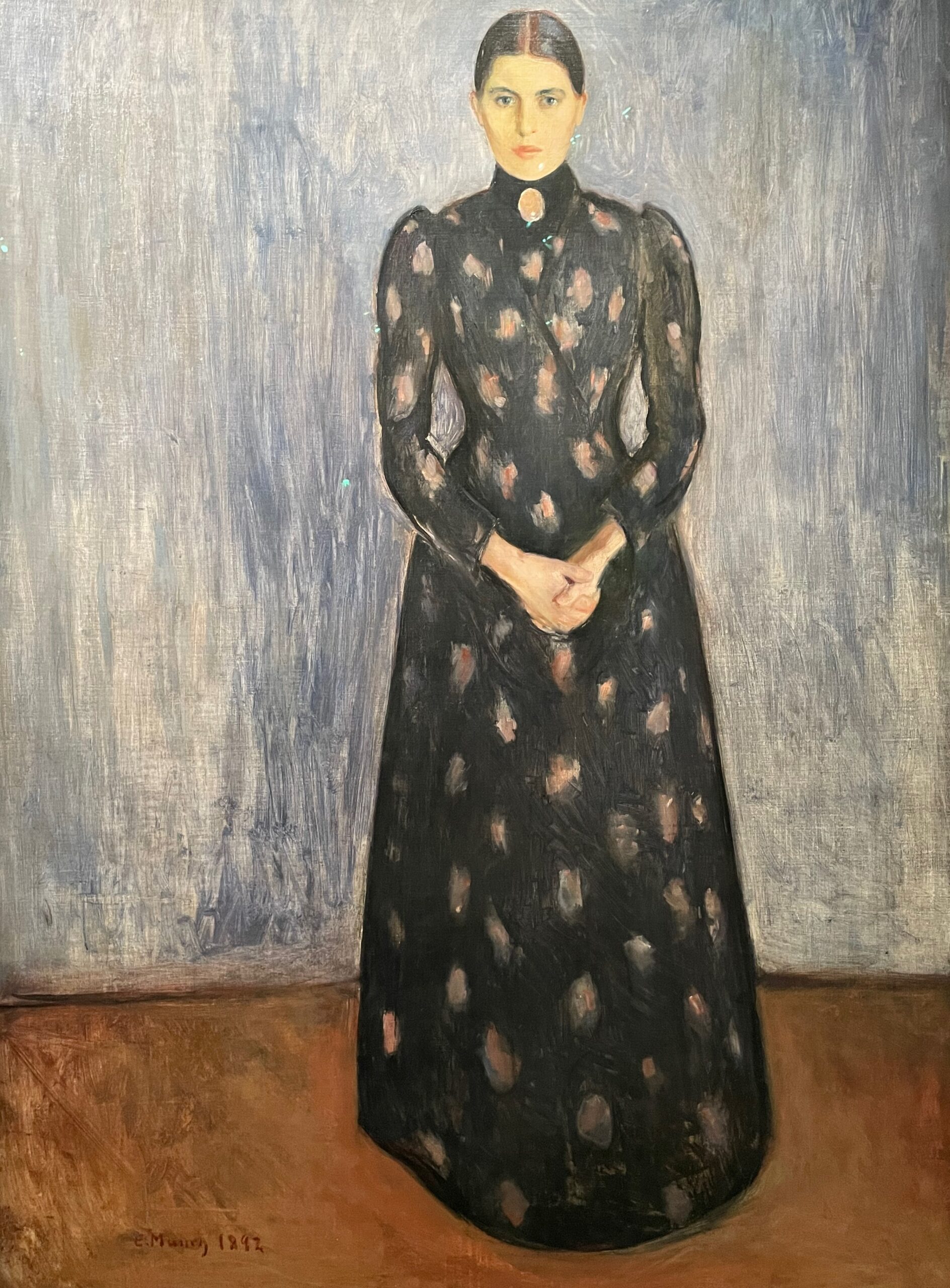 |
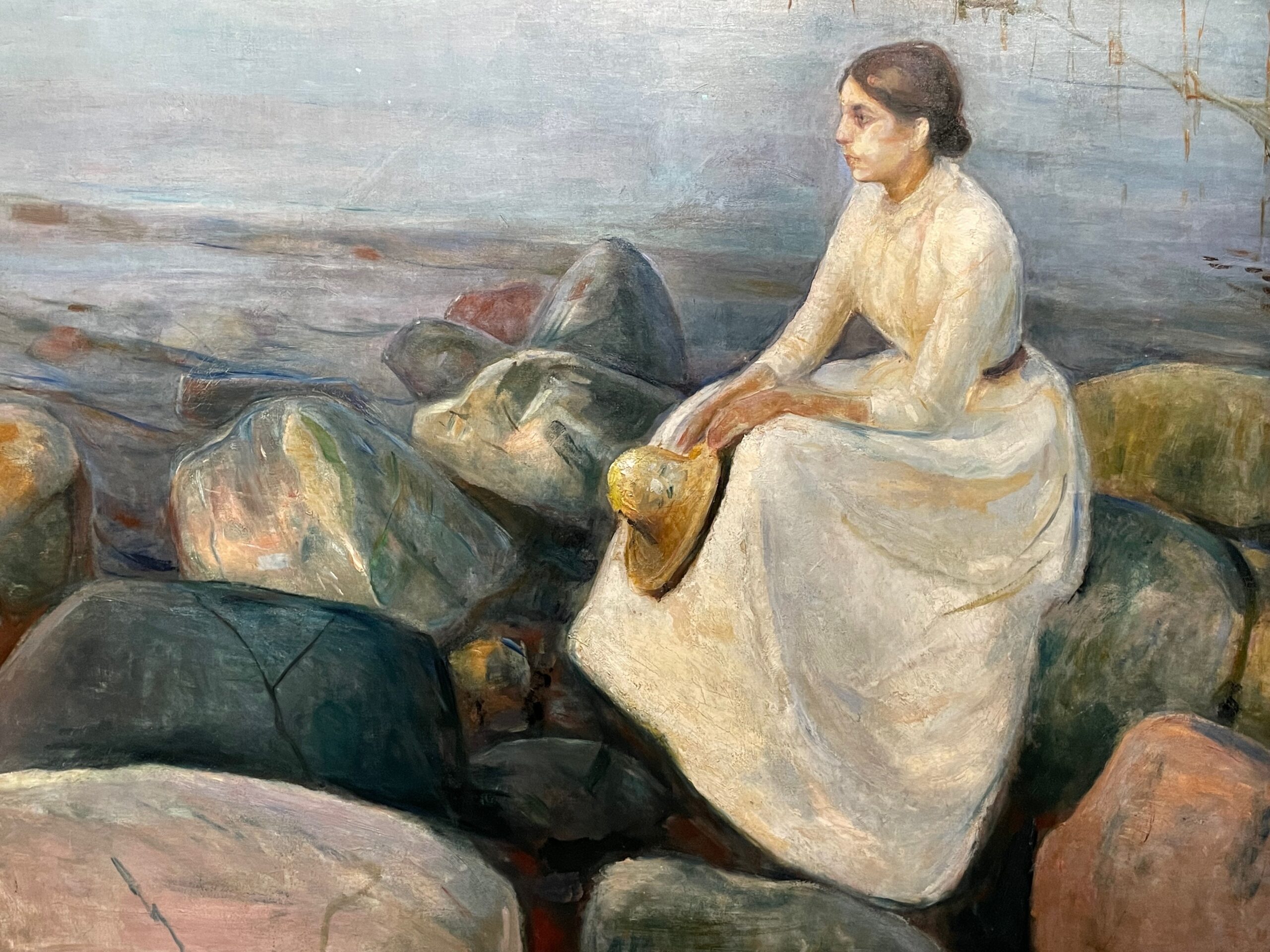 |
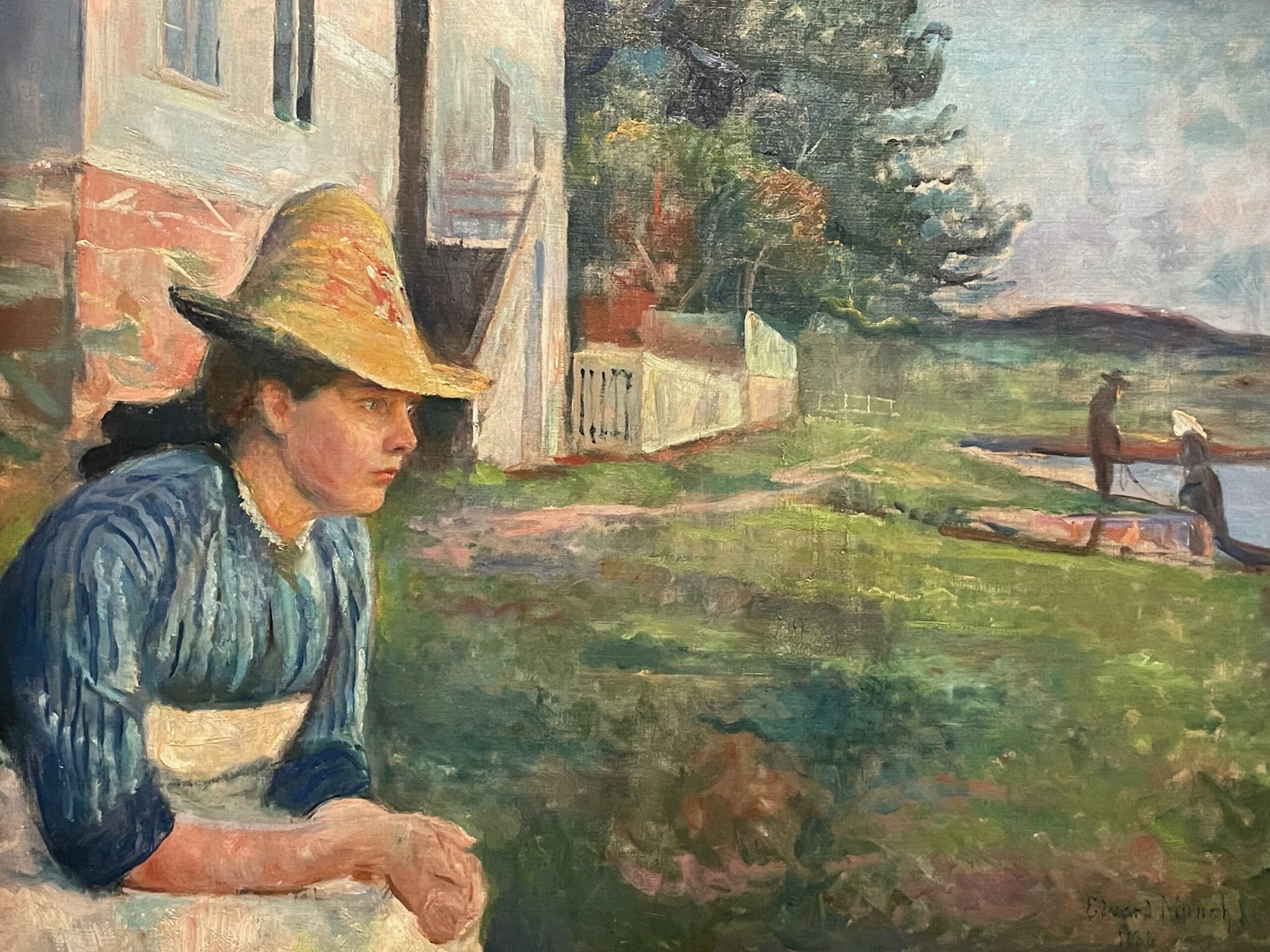 |
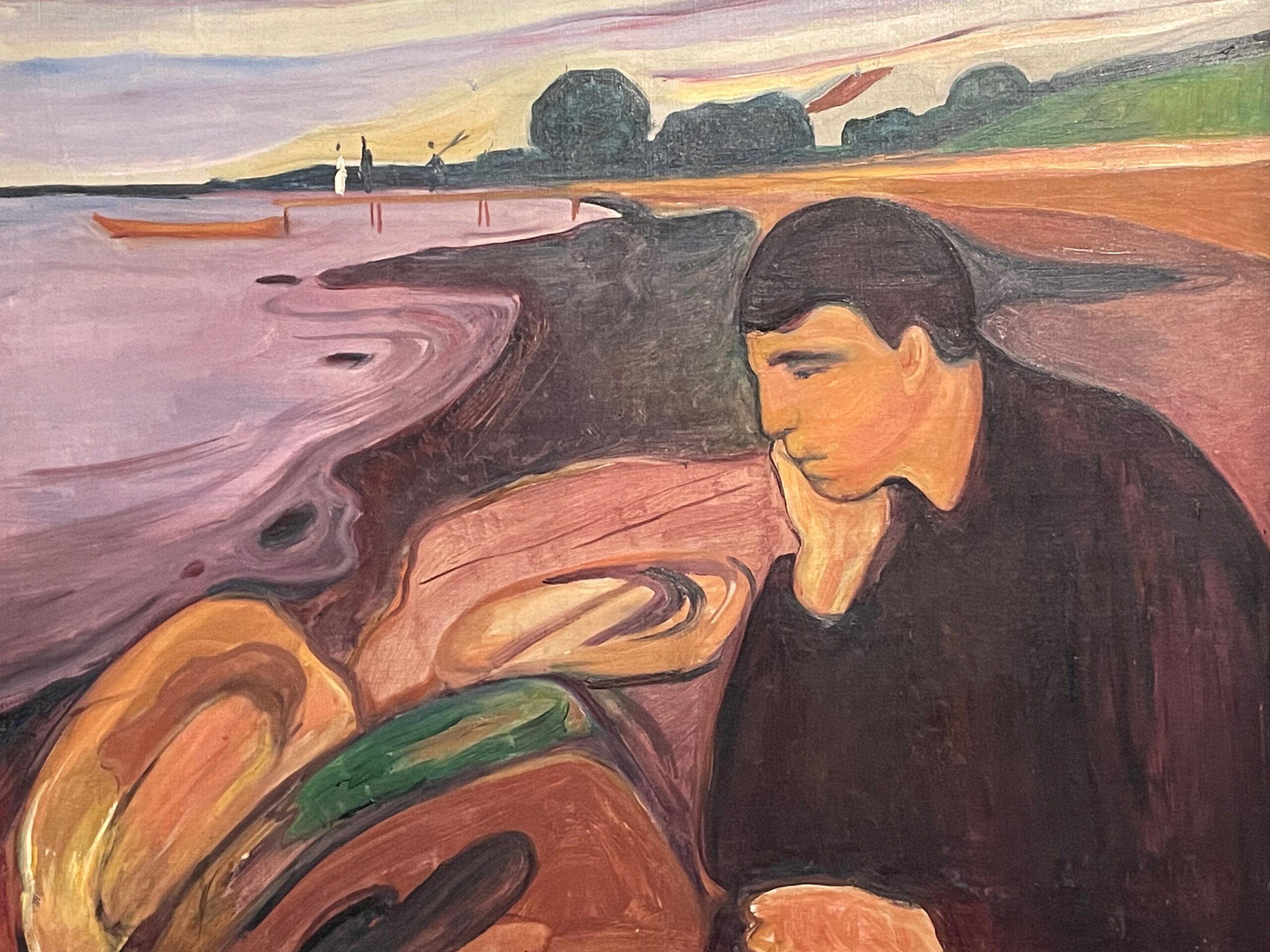 |
One of the key themes that appear in Munch’s work for several decades is exploration and expression of three emotions: love, anguish and existential doubt. Along the years, he was returning almost obsessively to a small number of themes meaning of which being constantly reinvented and developed. This intense process drew his painting style towards symbolism in the early 1890s.
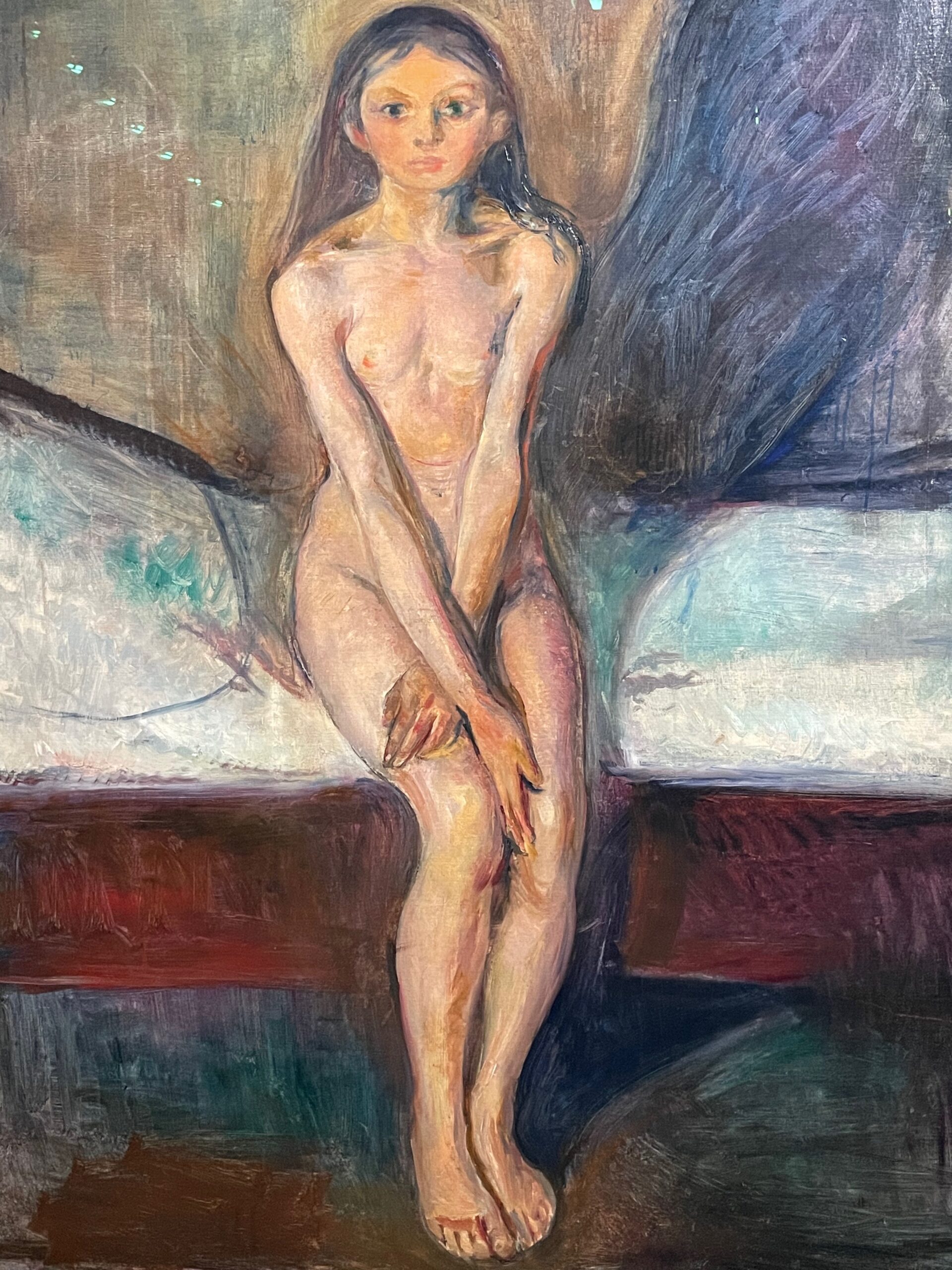 |
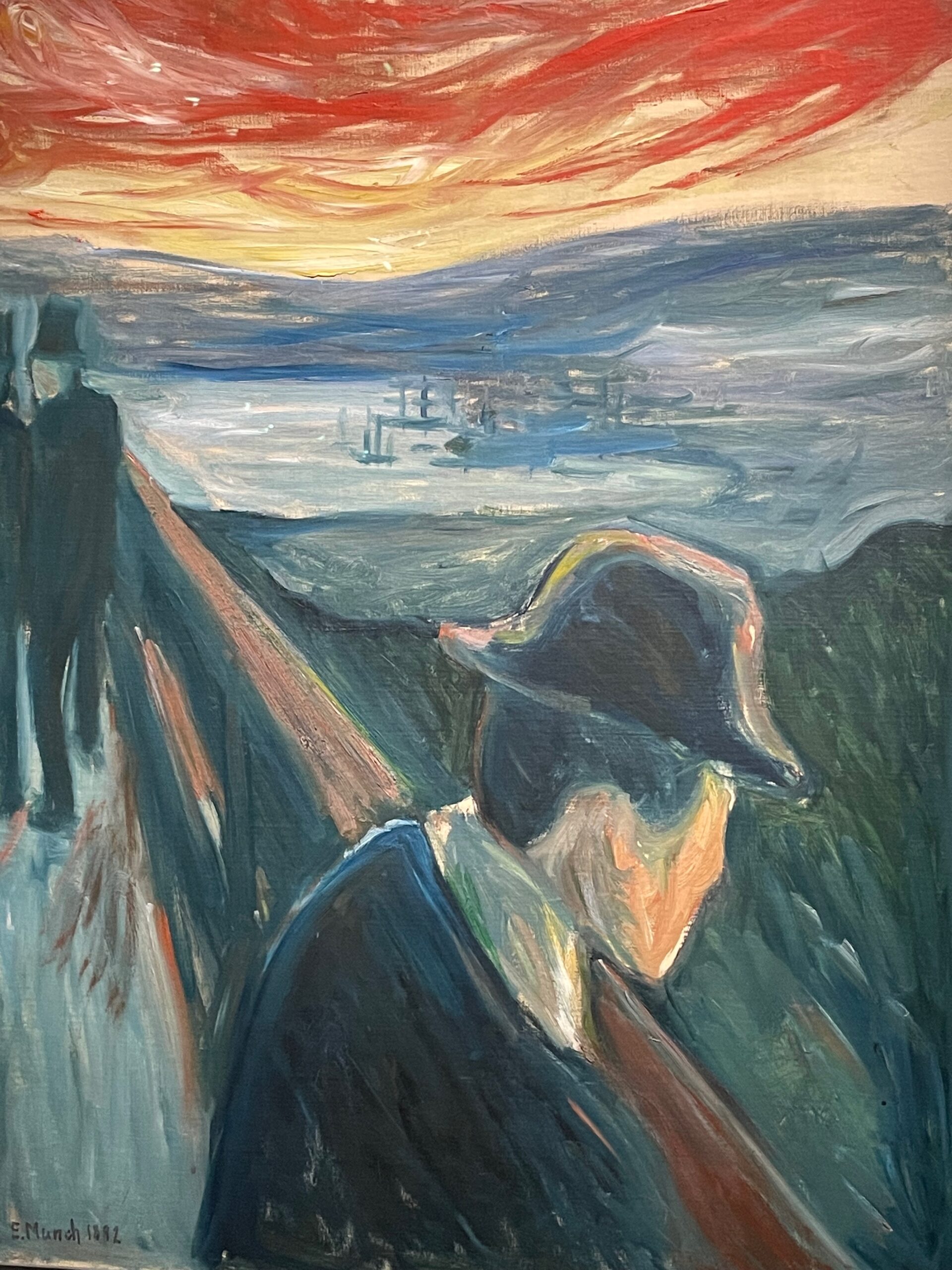 |
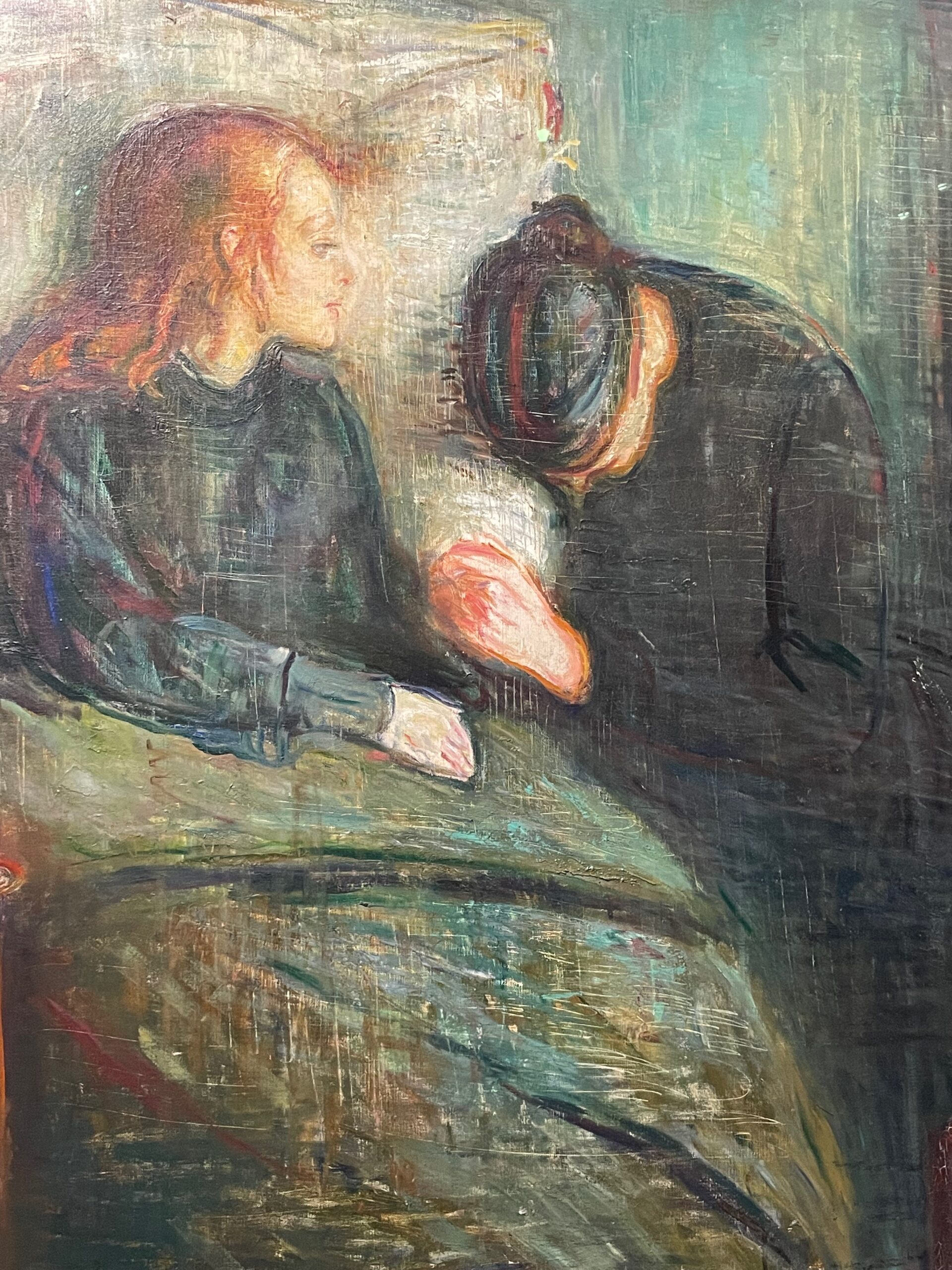 |
“The Frieze of life is intended as a number of decorative pictures, which together would represent an image of life. The Frieze is intended as a poem of life, love, and death.” – The Frieze of Life 1919
Edvard Munch experienced in his life emotional turmoil coming from the chaos and troubles in his professional life, his health, and his love life. While in his life he succumbed to solitude, his paintings did not stack against the walls. In fact, he grouped his main motifs together in a large project which became a representation of the cycle of life itself, and entitled it The Frieze of life. He begun to work on this series of paintings in the 1890s and featured them in many prestigious exhibitions including famous The Berlin Secession exhibition in 1902. The event became a game changer for the artist, for the first time the artist created a hanging scheme for his works as a true discourse with a particular focus on the continuous cycle of life and death. The Frieze of Life project was put very centrally in his entire work and had a serious impact on his entire career (or at least it was what the artist believed). Throughout years of his artistic activity, Munch focused on working on component paintings and explored their potential. Between 1900 and 1910 he also endorsed in projects associated with the theatre and architectural decoration and incorporated some of these themes into his works.
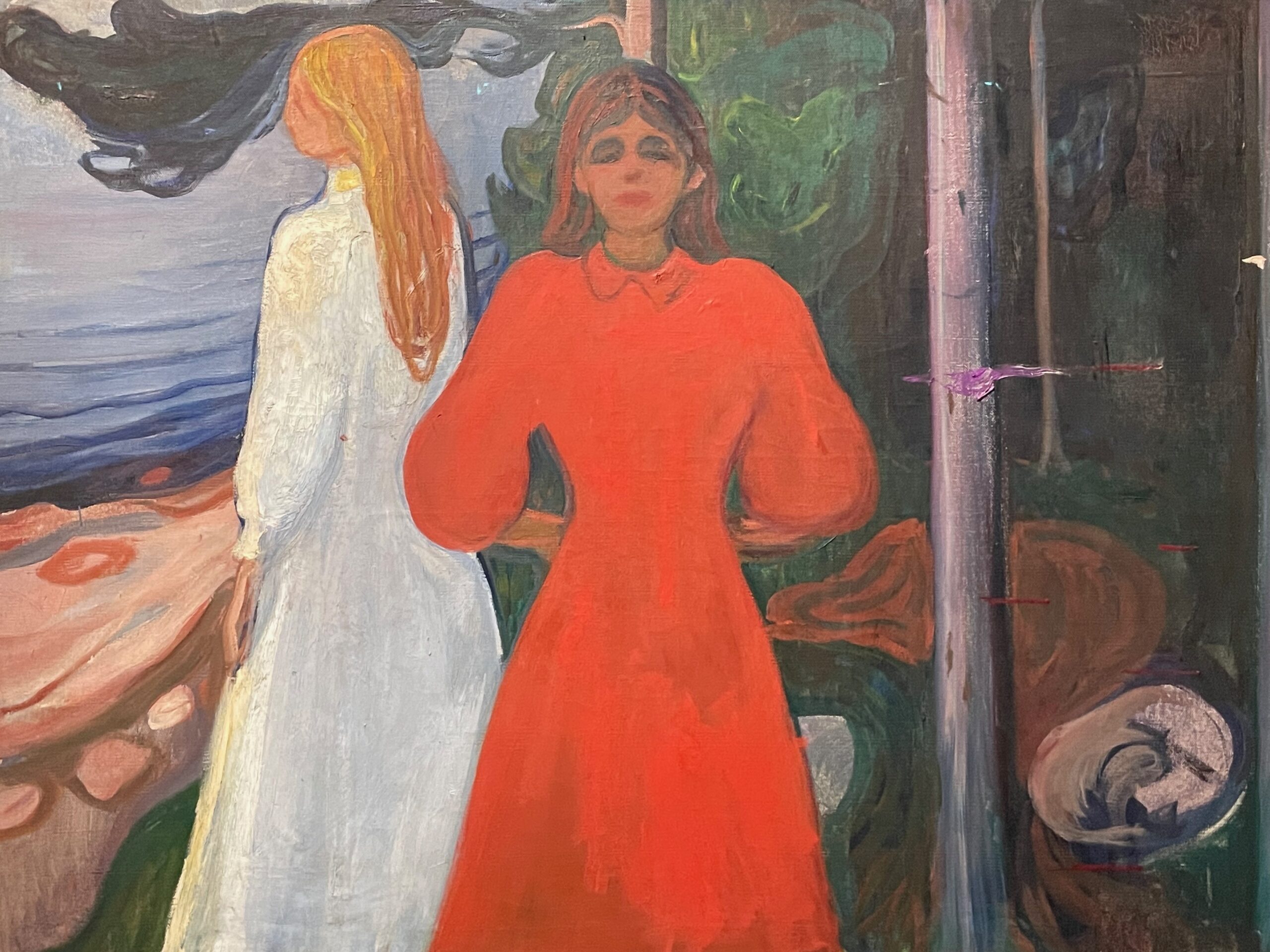 |
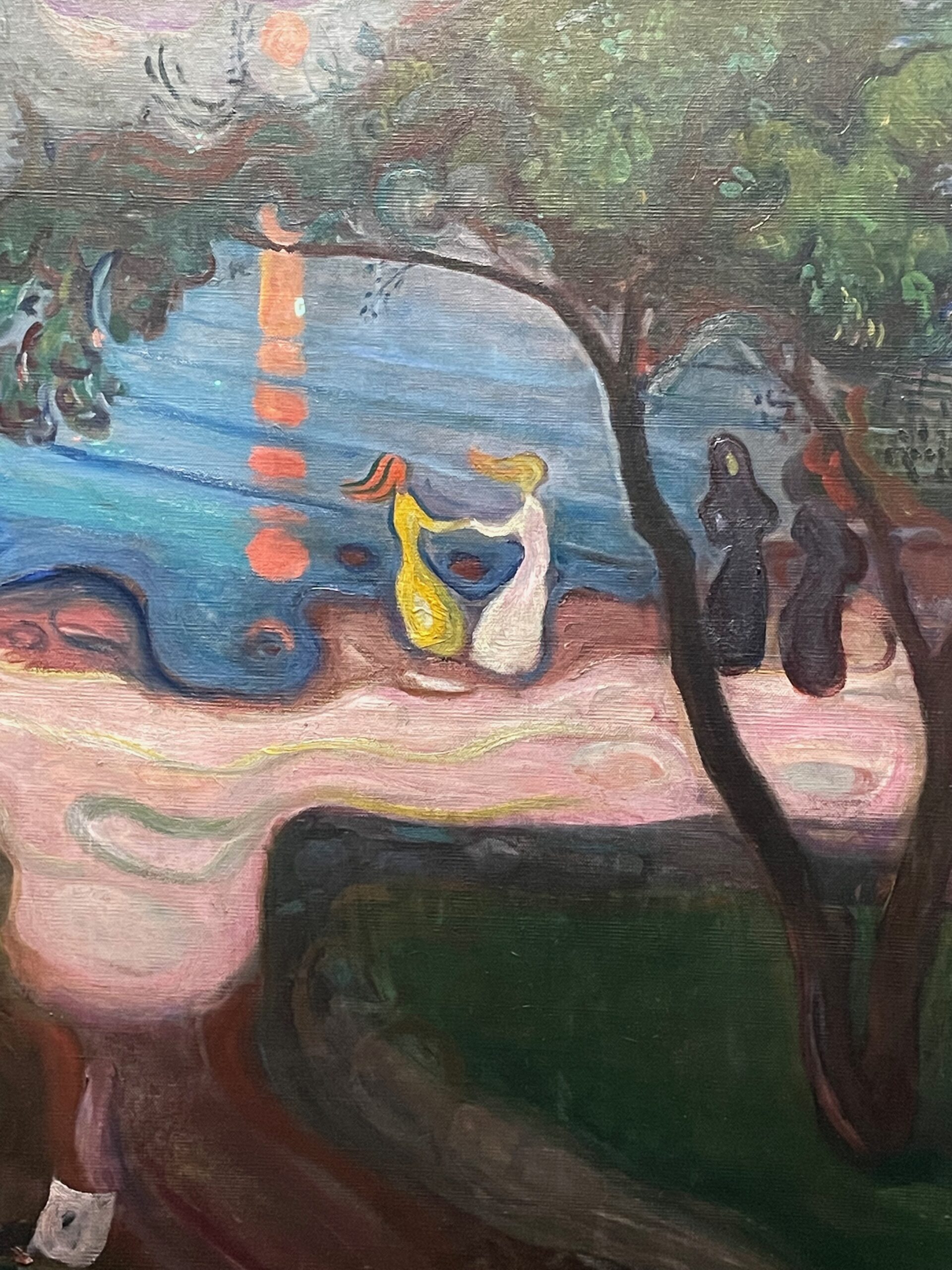 |
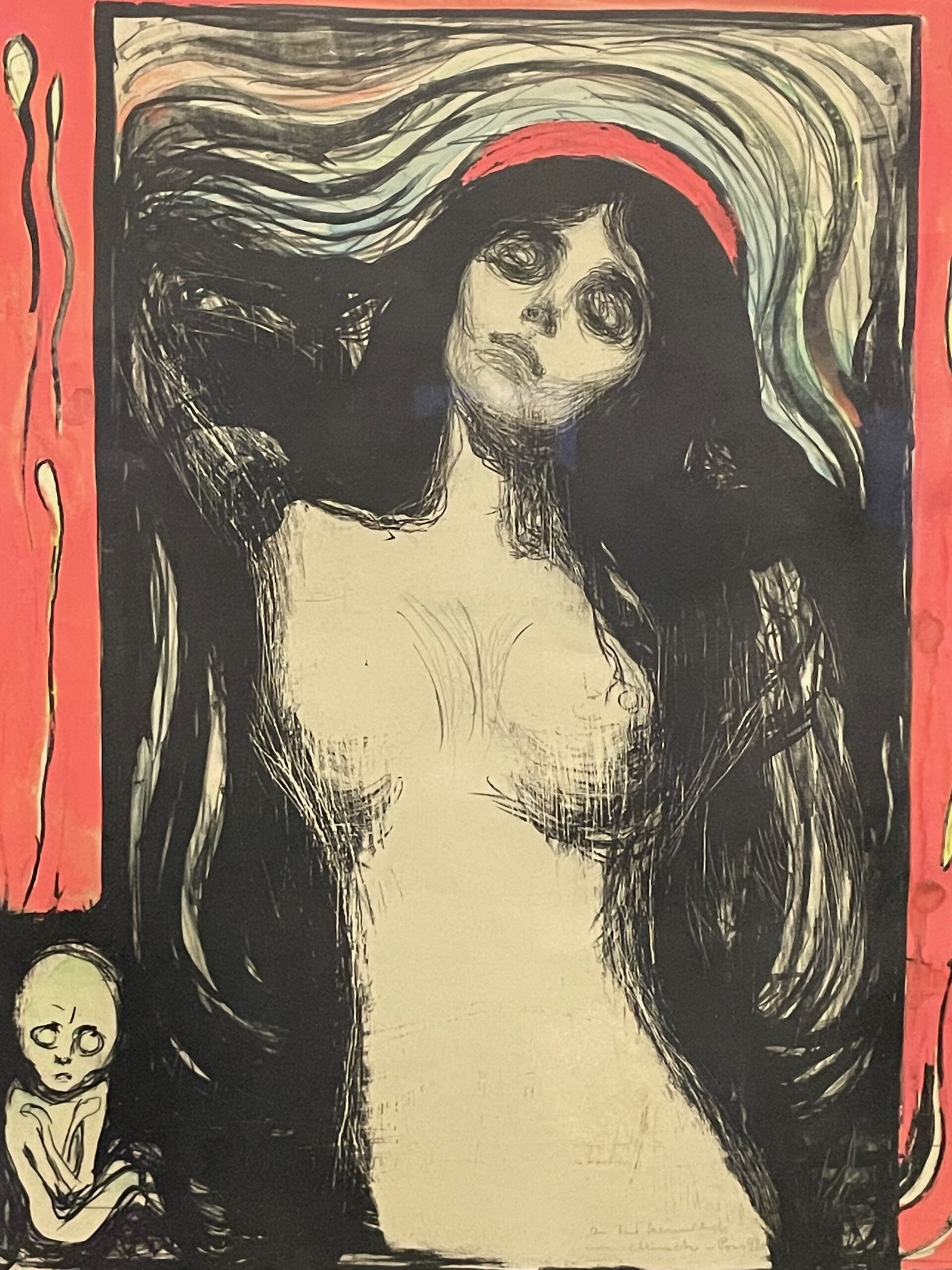 |
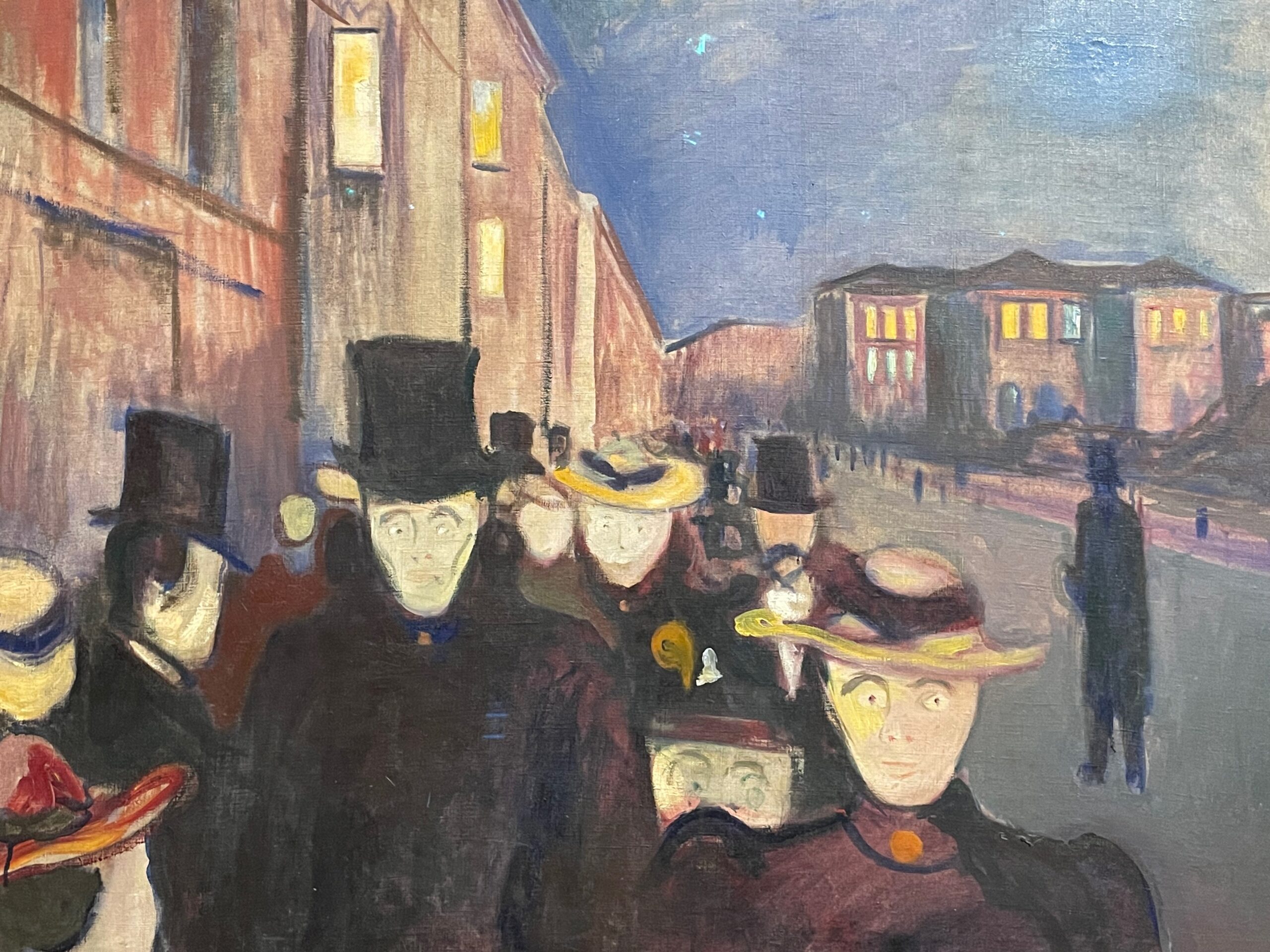 |
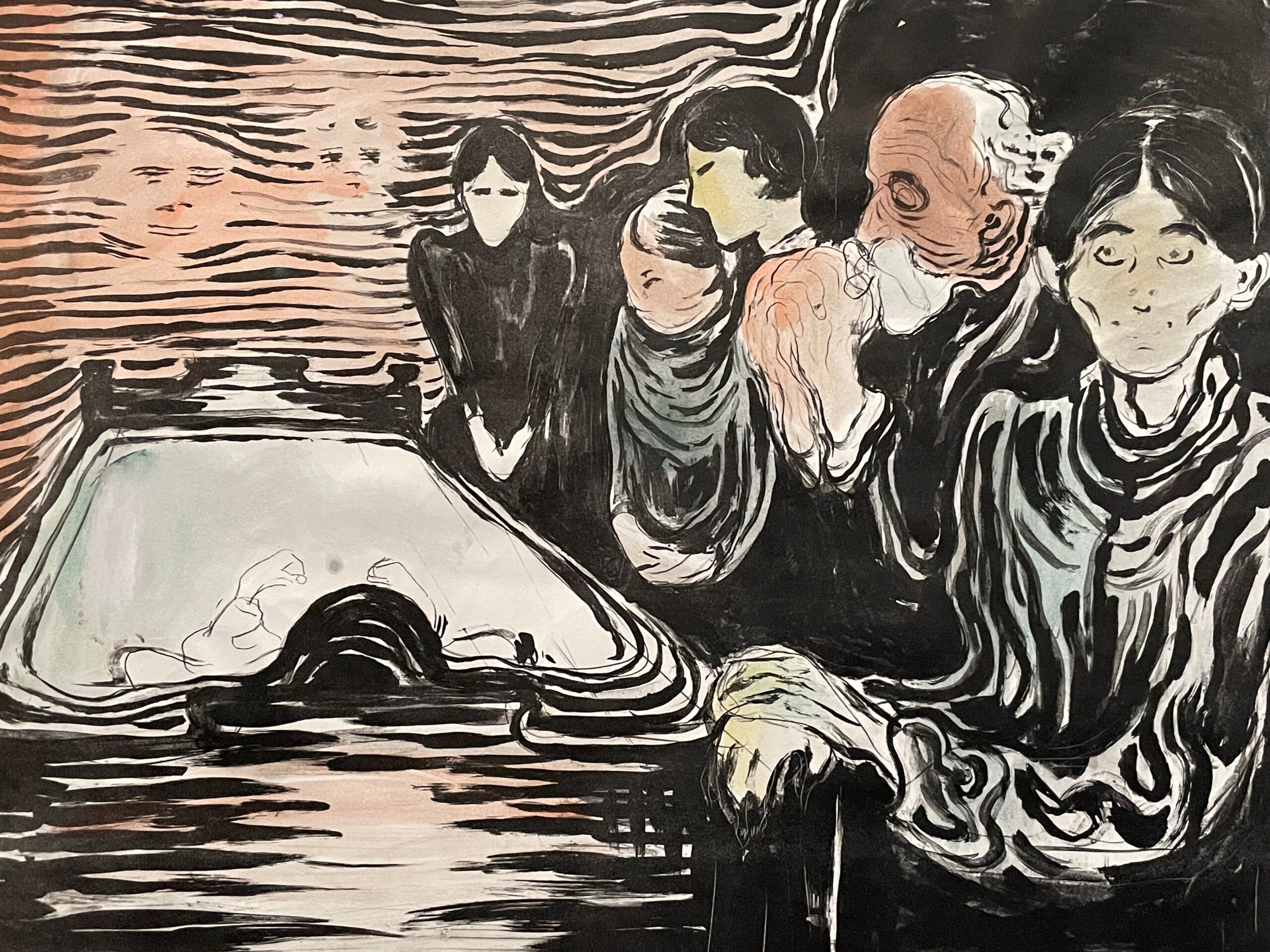 |
“There was always progress, too, and they were never the same – I build one painting on the last.” -Draft of a letter to Axel Romdahl.
Munch is known for reworking his paintings which resulted in producing multiple versions not only of themes but also of the general composition of his works. Many of his paintings and engravings are in fact different variants of previous works. This approach shows the cyclical nature of Munch’s work. The repetitive use of the same elements in his compositions created a continuity between works regardless of the date of their creation or the technique employed. Moreover, it allowed the artist to evoke again the emotion which was conveyed in the motif. In order to spread his work on larger scale, Munch mastered the art of engraving in the mid-1890s. This technique gave him enormous opportunity for exploration and he quickly acquired traditional techniques to create even more expressive works.
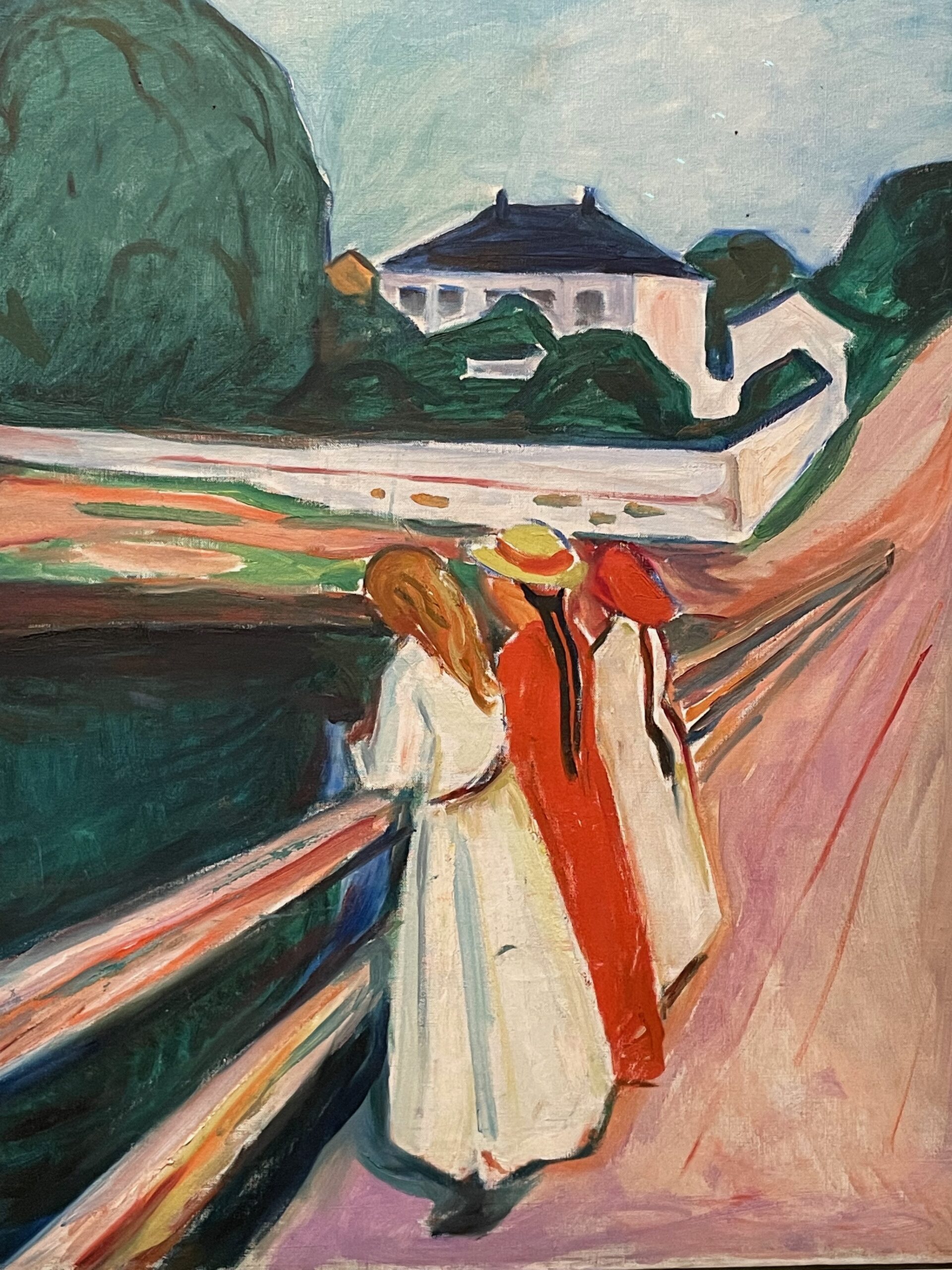 |
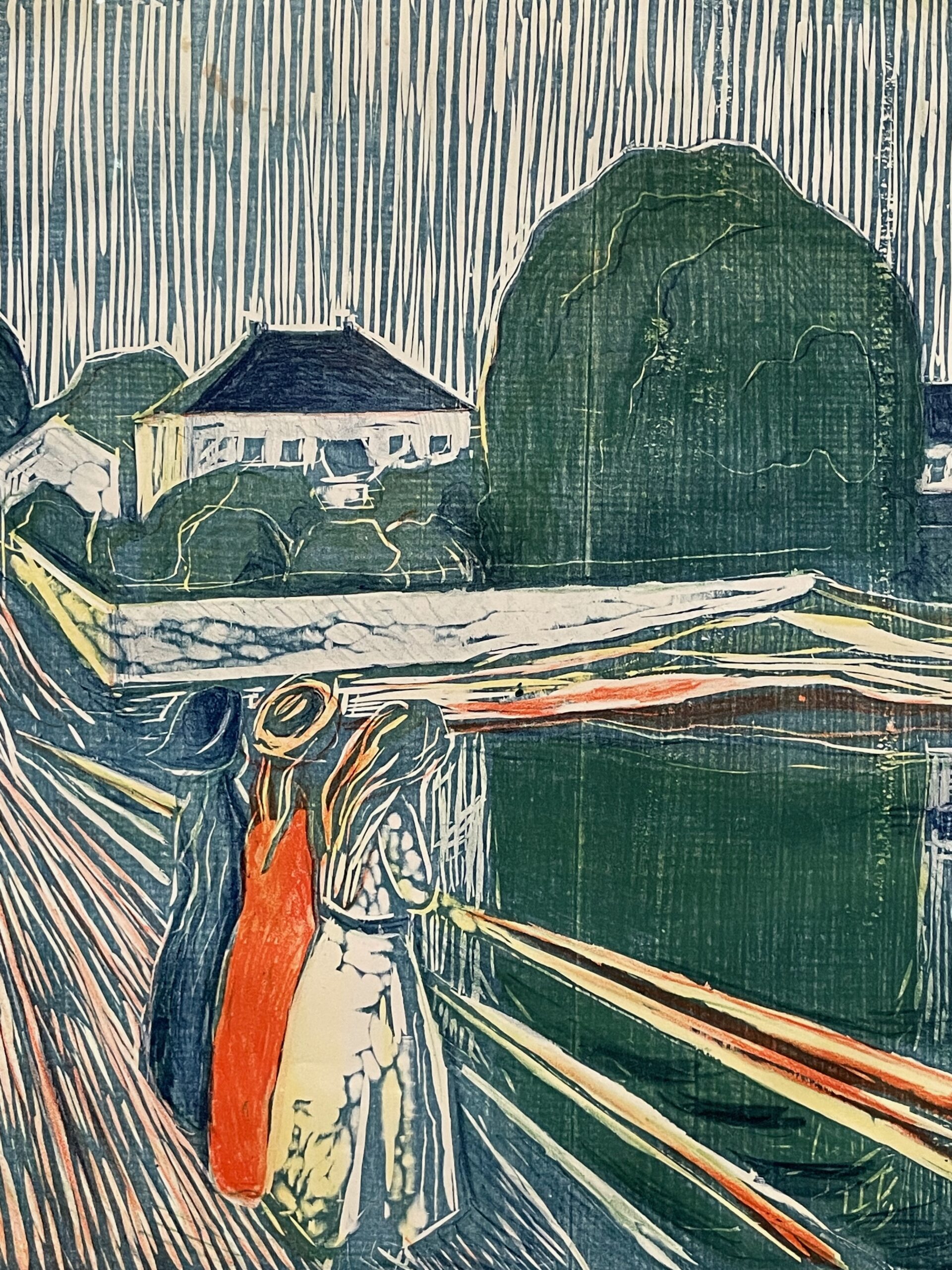 |
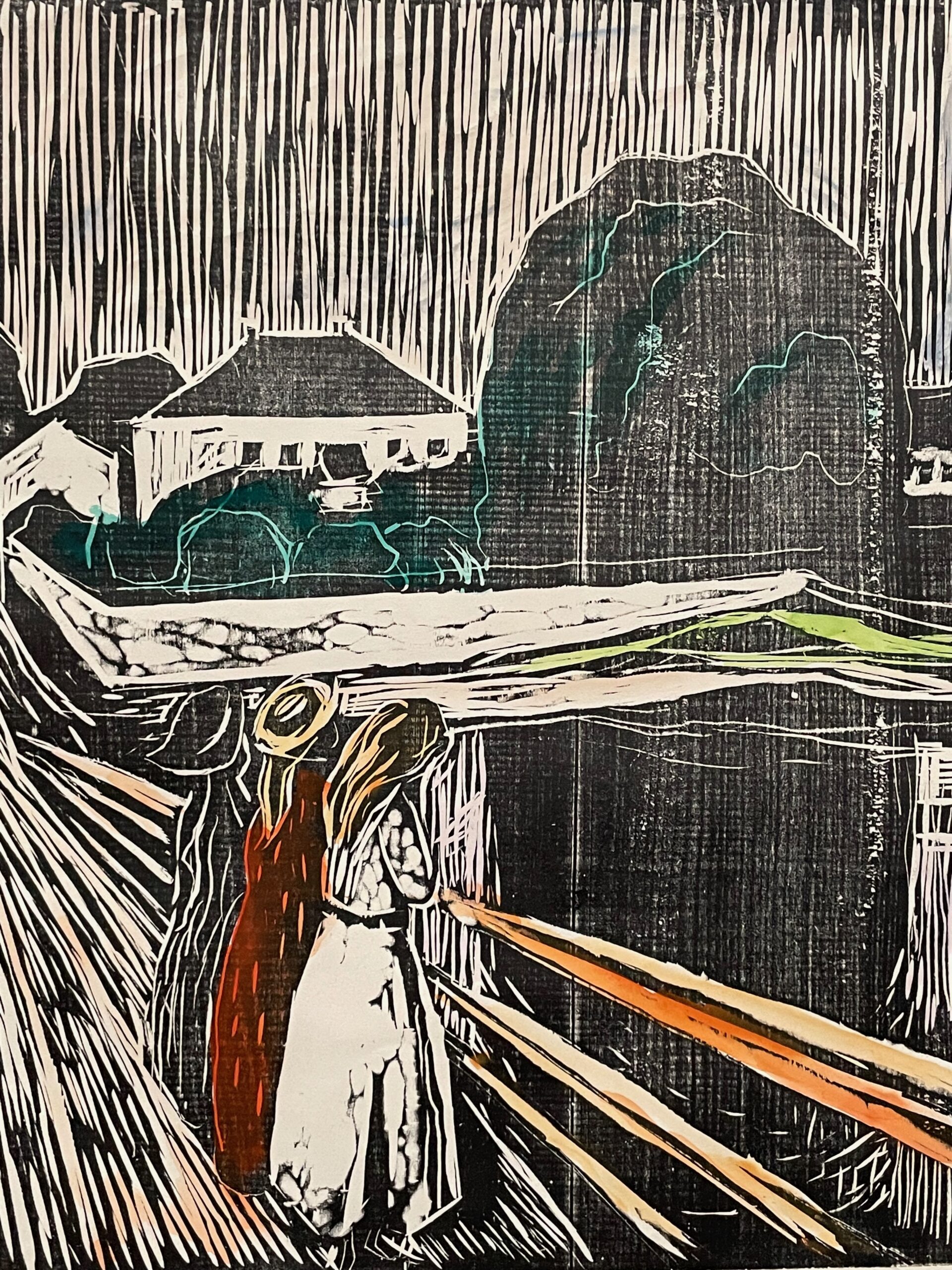 |
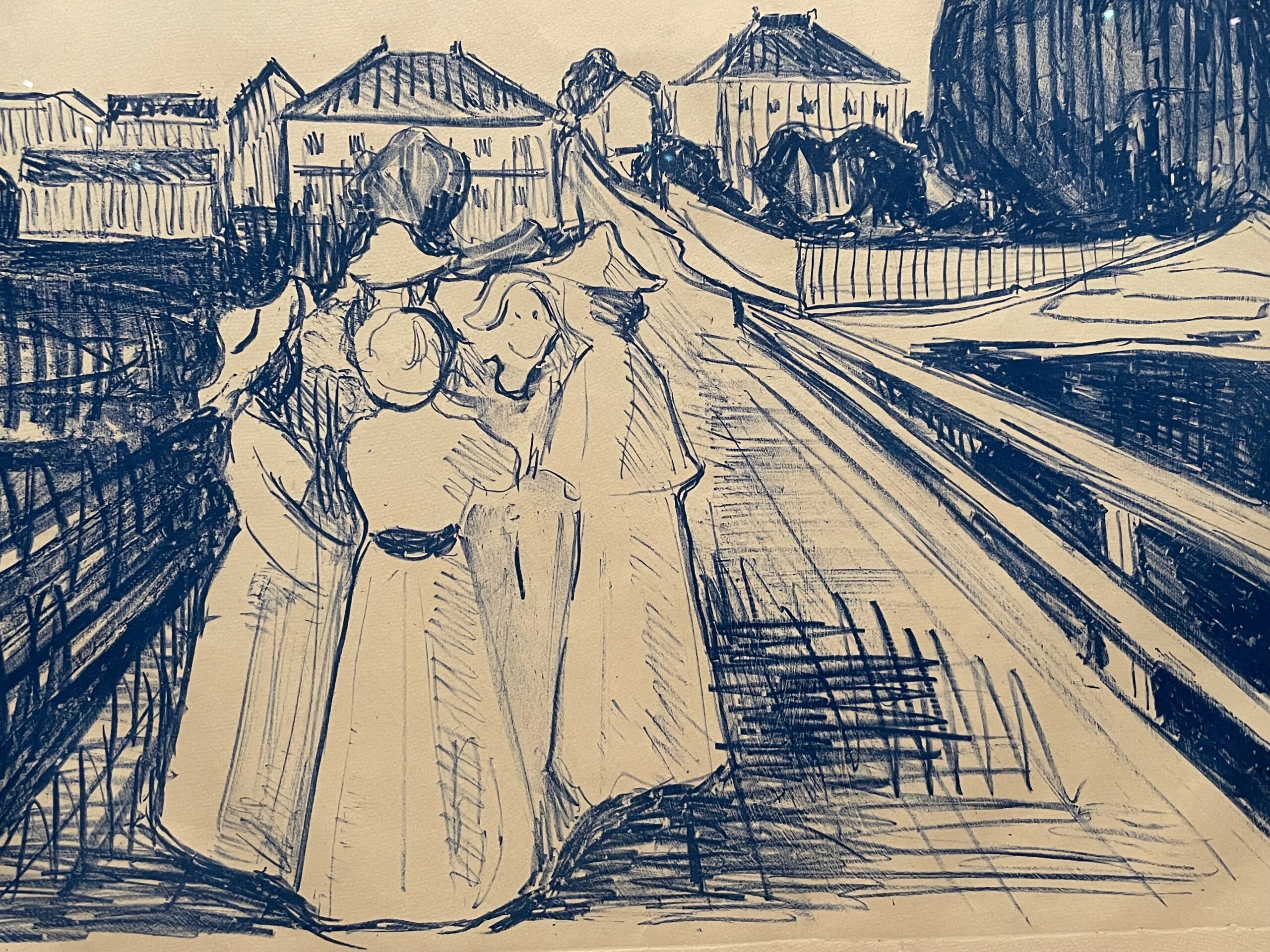 |
My favourite, somewhat lighter series of Munch works was commissioned in 1904 by his patron Max Linde. Munch was hired to create few paintings for his children’s bedroom. The artist reworked key subjects from The Frieze of life and brightened the themes with more direct references to nature. However, the the works were not accepted by Linde who claimed that the works are not suitable for the purpose.
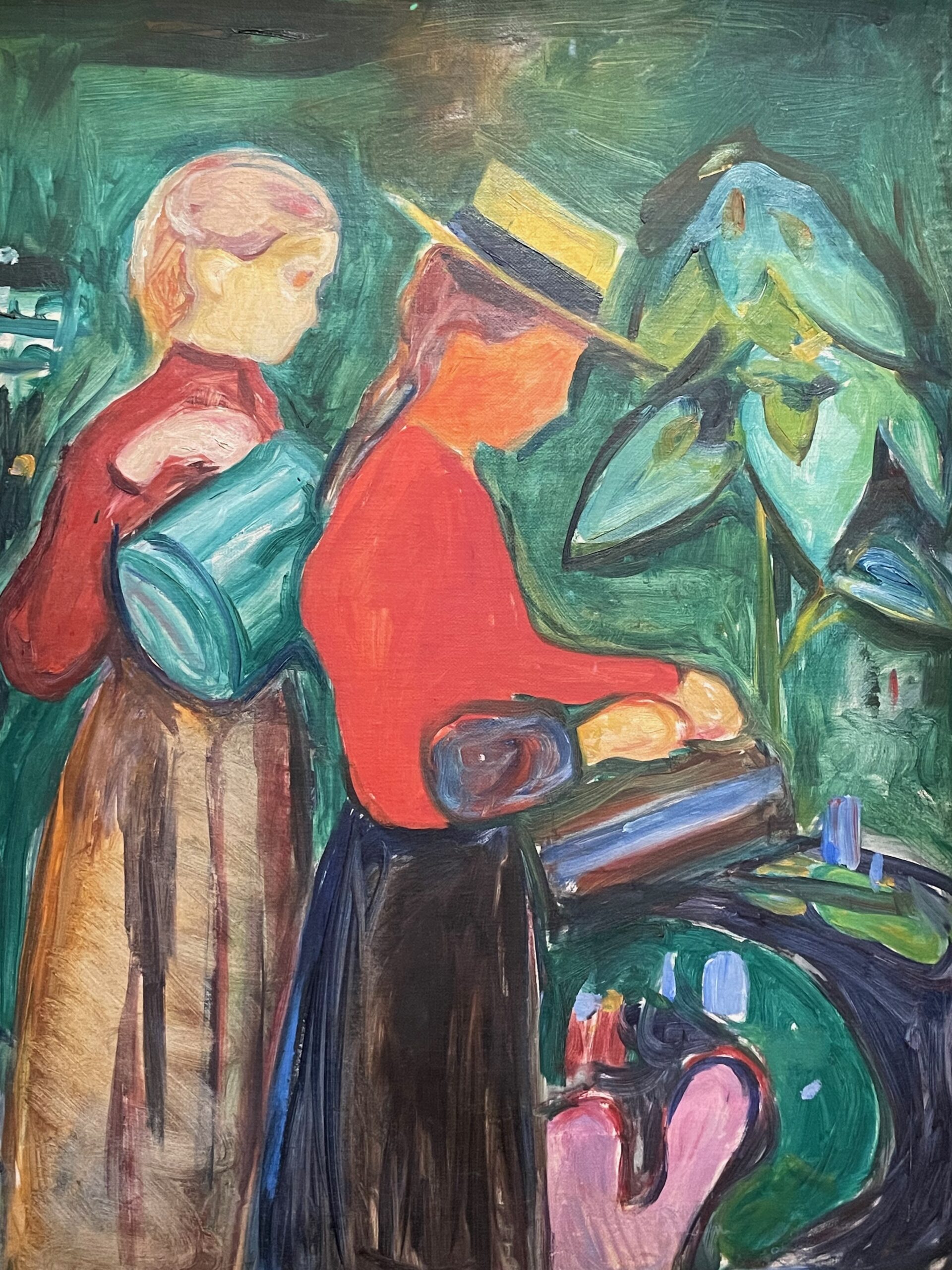 |
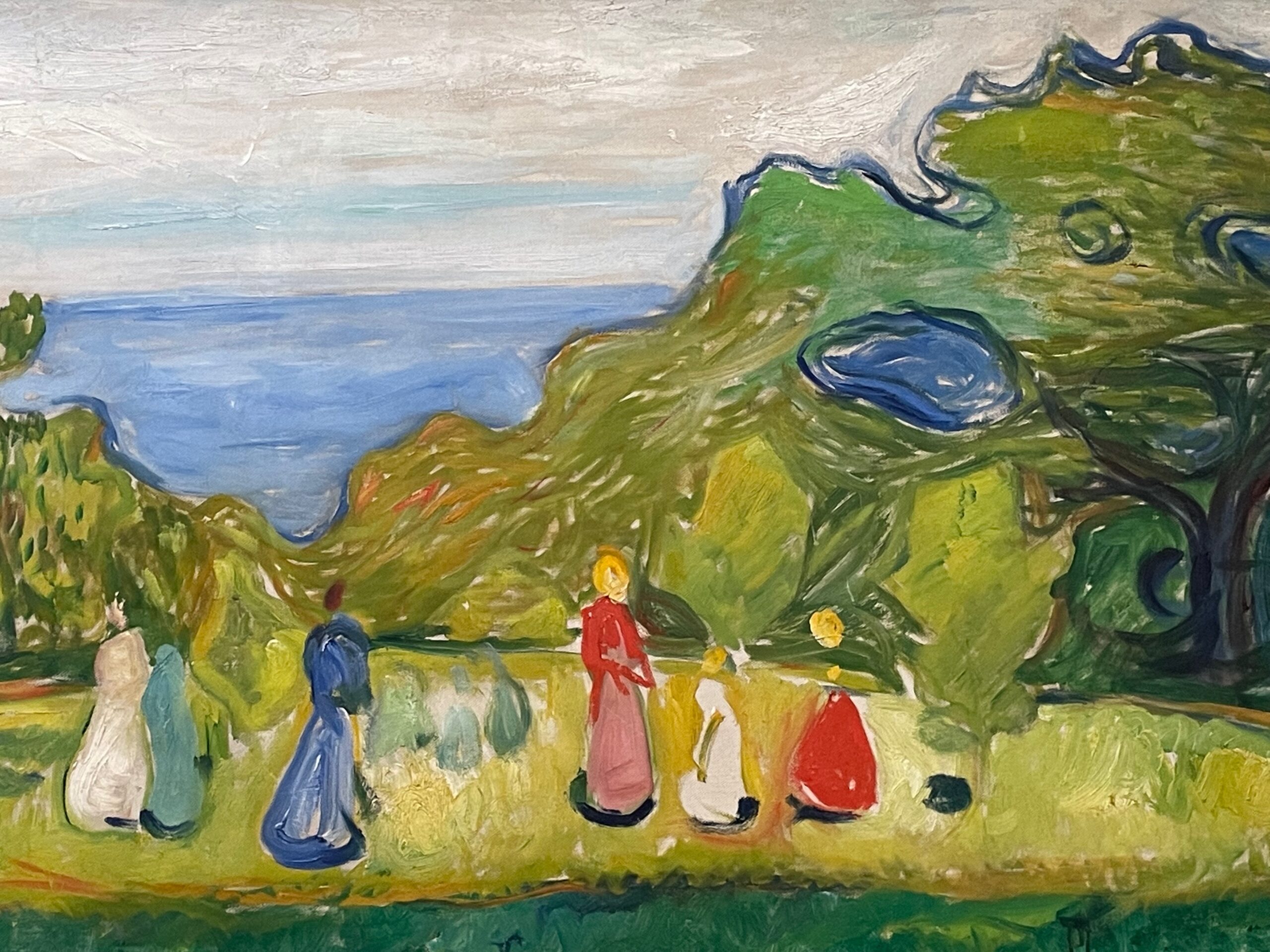 |
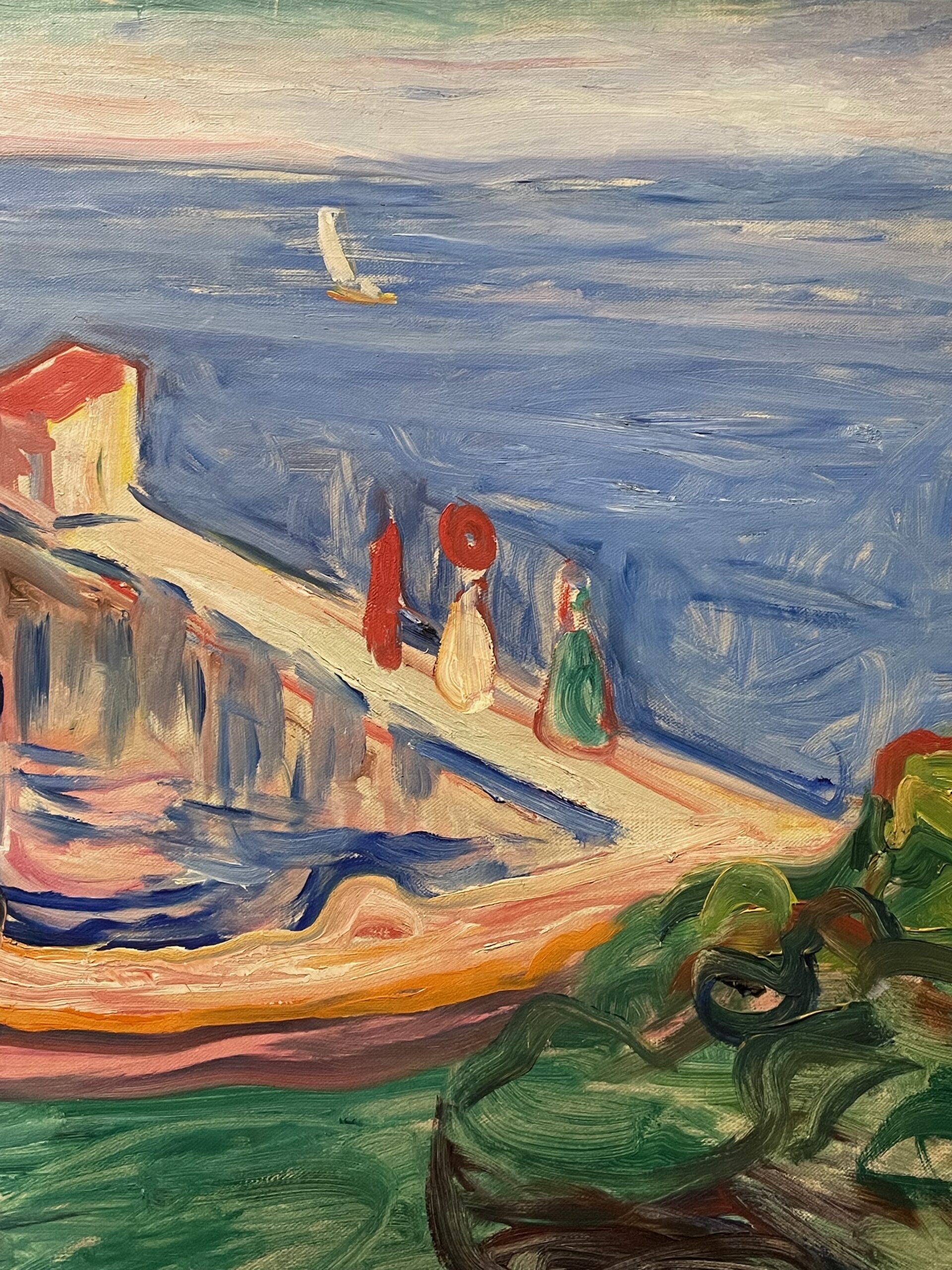 |
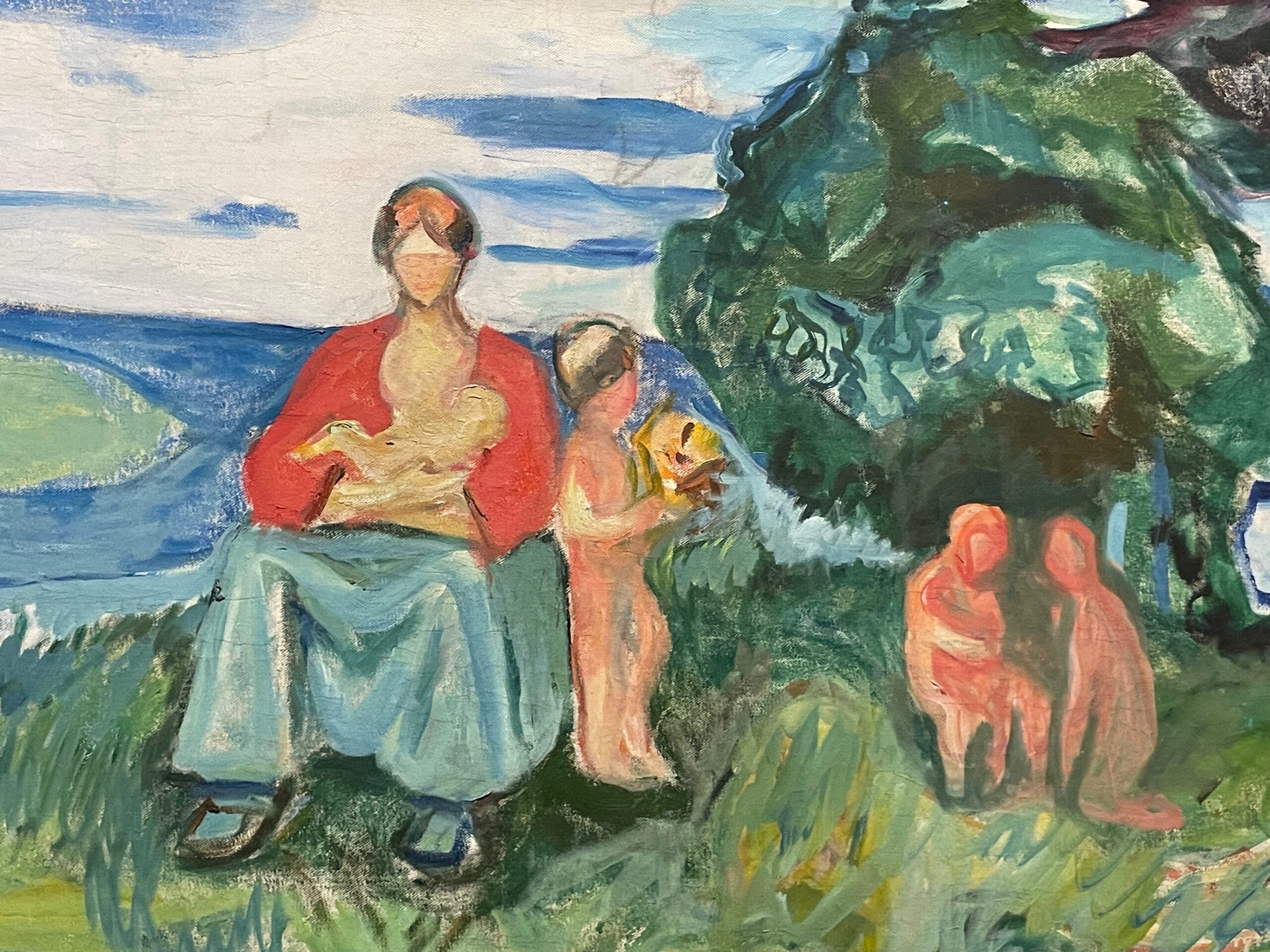 |
It’s not possible to discuss Munch’s artwork without reflecting on his most famous painting The Scream. The artist created several versions of the motif, the most famous one was not displayed in this exhibition. In Musee d’Orsay we could see the first print of it instead. The touching and in a way frightening depiction of a person is despair goes beyond the personal traumatizing experiences and is universal allegory of feelings of anxiety and anguish – the universal nature of this theme (as well as the masterpiece’s quality) most probably brought The Scream its great fame, the painting is undoubtedly the most recognized work of Munch. However, even if most people would mention The Scream if asked to name Munch’s work, one should see it as part of the series of paintings focused on expressing feelings as accurately and intensely as possible. His works were hugely impacted by his personal life, loss of his mother and daughter, unfulfilling love as well as many other tragedies that happened to him and about which we learn through this exhibition. One can appreciate The Scream most, when getting familiar with other works of the artist which are characterized by continuity of motifs and incredible cohesion.
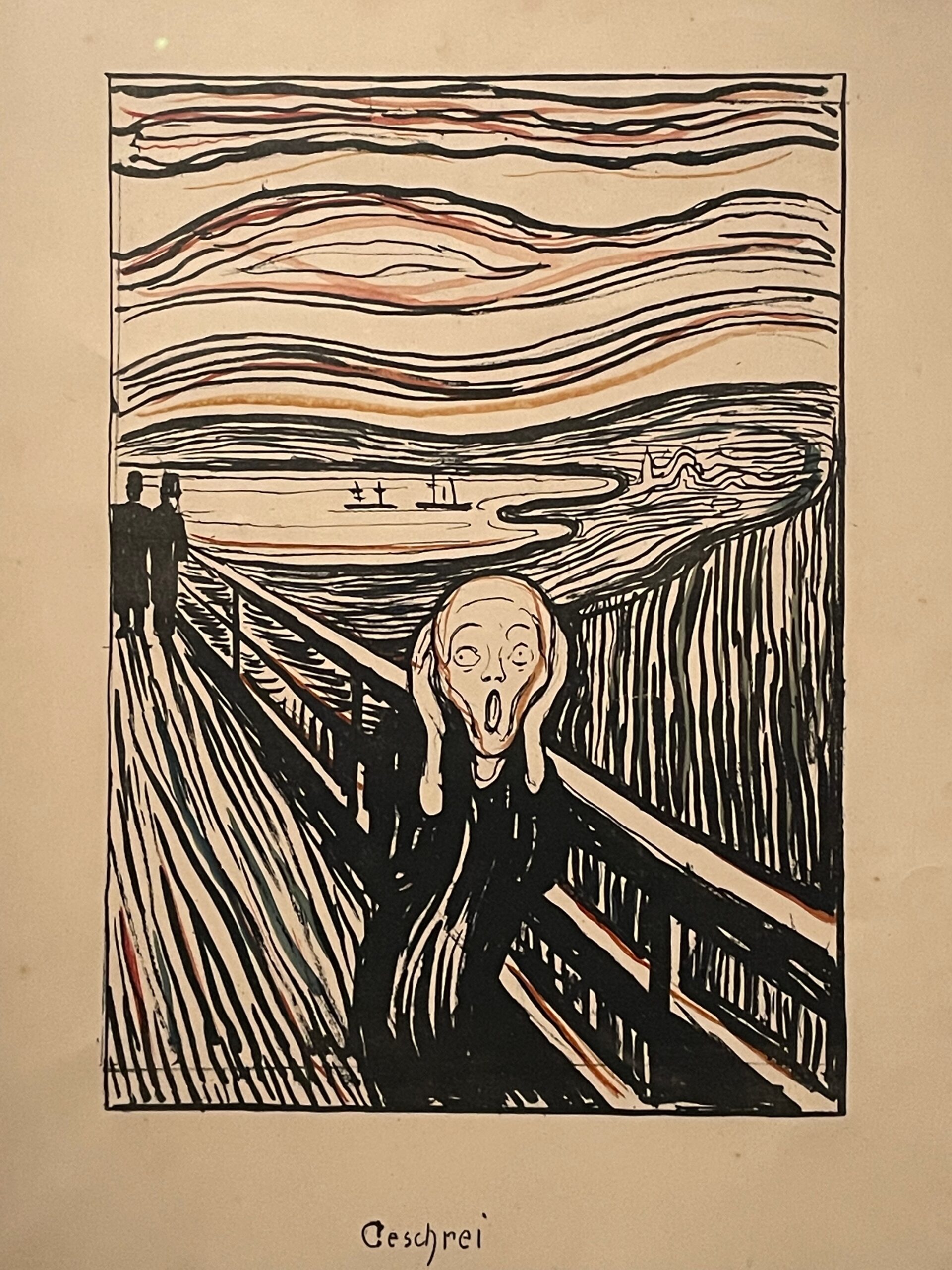 |
My personal opinion is, that the strongest point of the exhibition is not only to familiarize with Munch’s work but the display allows better understanding of the artist and see how his paintings express his emotions and thoughts on love, sexuality, solitude, anxiety and death. We can notice the strong ties of Scandinavian artists with nature and how they find reflections of their own feelings and states of mind in the universe. The exhibition was an intellectual feast providing not only good art but also delivering interesting point of view on cyclic nature of life, hopes and disappointment, love and loss as well as professional fulfilment.
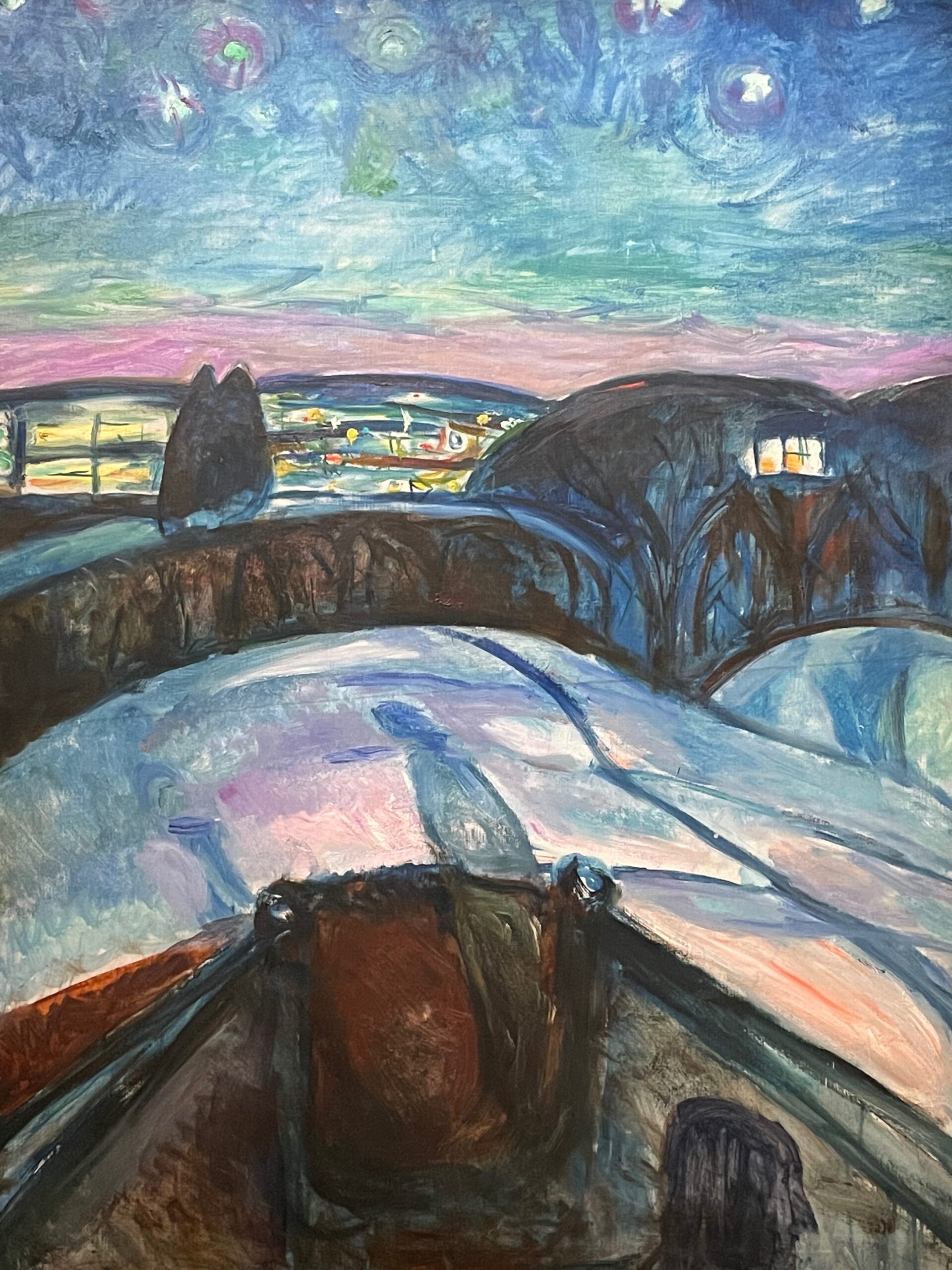 |
“My whole life has been spent walking by the side of a bottomless chasm, jumping from stone to stone. Sometimes I try to leave my narrow path and join the swirling mainstream of life, but I always find myself drawn inexorably back towards the chasm’s edge, and there I shall walk until the day I finally fall into the abyss.” – Edvard Munch.
